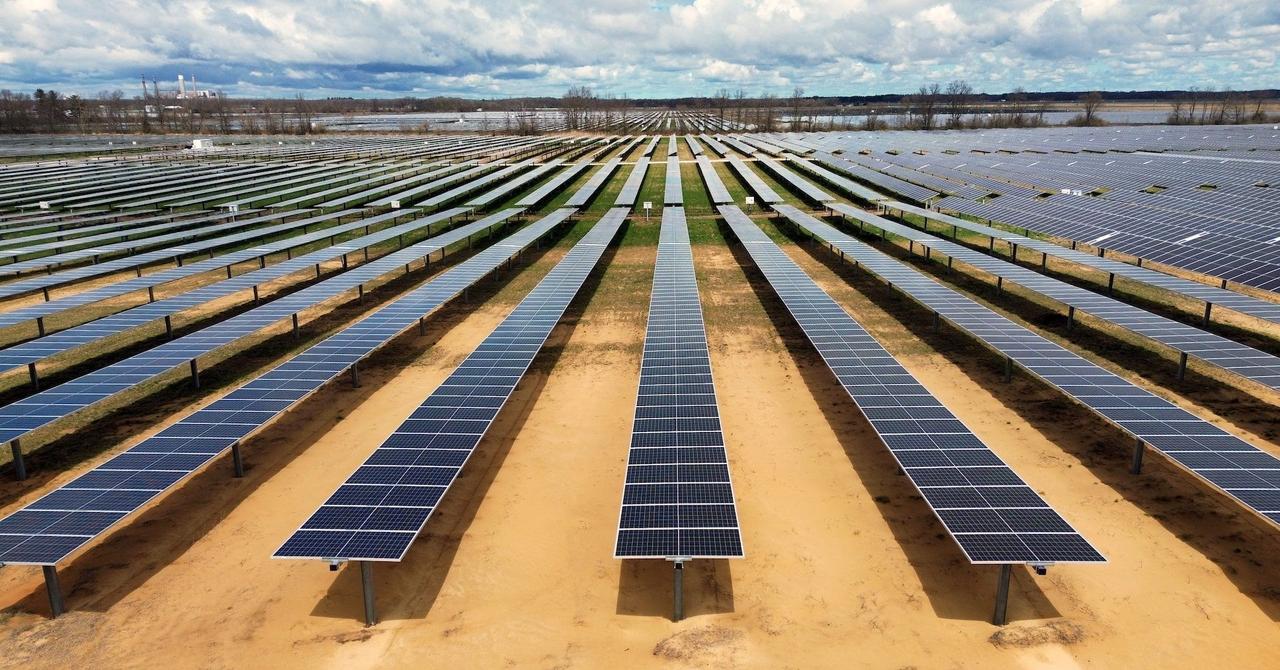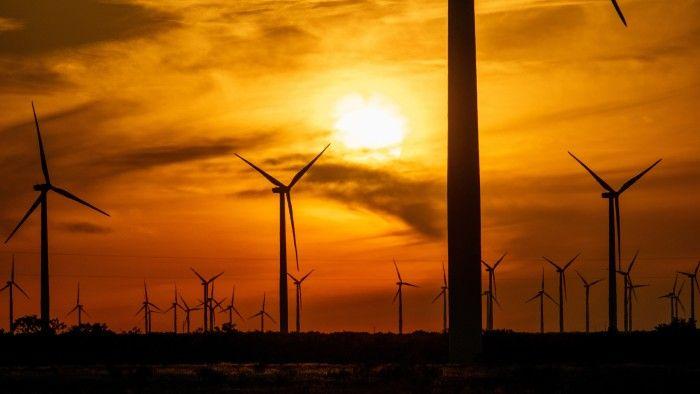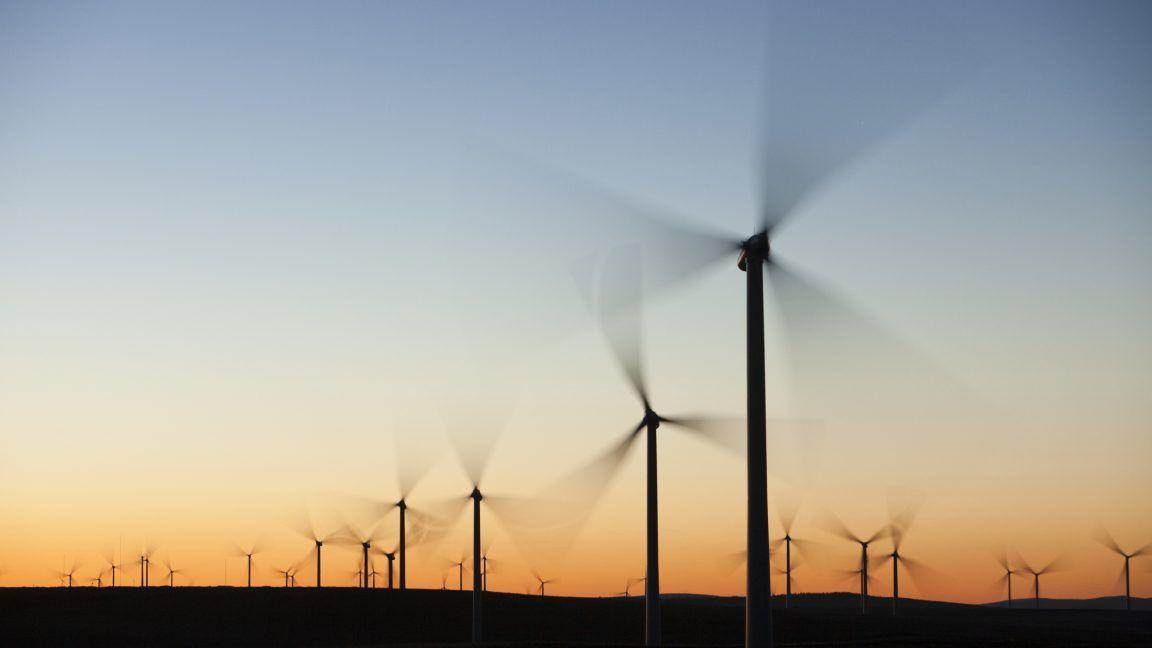Trump's Clean Energy Subsidy Cuts Threaten US Renewable Projects and AI Industry Growth
4 Sources
4 Sources
[1]
Boom fades for US clean energy as Trump guts subsidies
July 24 (Reuters) - Singapore-based solar panel manufacturer Bila Solar is suspending plans to double capacity at its new factory in Indianapolis. Canadian rival Heliene's plans for a solar cell facility in Minnesota are under review. Norwegian solar wafer maker NorSun is evaluating whether to move forward with a planned factory in Tulsa, Oklahoma. And two fully permitted offshore wind farms in the U.S. Northeast may never get built. These are among the major clean energy investments now in question after Republicans agreed earlier this month to quickly end U.S. subsidies for solar and wind power as part of their budget megabill, and as the White House directed agencies to tighten the rules on who can claim the incentives that remain. This marks a policy U-turn since President Donald Trump's return to office that project developers, manufacturers and analysts say will slash installations of renewable energy over the coming decade, kill investment and jobs in the clean energy manufacturing sector supporting them, and worsen a looming U.S. power supply crunch as energy-hungry AI infrastructure expands. Solar and wind installations could be 17% and 20% lower than previously forecast over the next decade because of the moves, according to research firm Wood Mackenzie, which warned that a dearth of new supplies could slow the expansion of data centers needed to support AI technology. Energy researcher Rhodium, meanwhile, said the law puts at risk $263 billion of wind, solar, and storage facilities and $110 billion of announced manufacturing investment supporting them. It will also increase industrial energy costs by up to $11 billion in 2035, it said. "One of the administration's stated goals was to bring costs down, and as we demonstrated, this bill doesn't do that," said Ben King, a director in Rhodium's energy and climate practice. He added the policy "is not a recipe for continued dominance of the U.S. AI industry." The White House did not respond to a request for comment. The Trump administration has defended its moves to end support for clean energy by arguing the rapid adoption of solar and wind power has created instability in the grid and raised consumer prices - assertions that are contested by the industry and which do not bear out in renewables-heavy power grids, like Texas' ERCOT. Power industry representatives, however, have said all new generation projects need to be encouraged to meet rising U.S. demand, including both those driven by renewables and fossil fuels. Consulting firm ICF projects that U.S. electricity demand will grow by 25% by 2030, driven by increased AI and cloud computing - a major challenge for the power industry after decades of stagnation. The REPEAT Project, a collaboration between Princeton University and Evolved Energy Research, projects a 2% annual increase in electricity demand. With a restricted pipeline of renewables, tighter electricity supplies stemming from the policy shift could increase household electricity costs by $280 a year in 2035, according to the REPEAT Project. The key provision in the new law is the accelerated phase-out of 30% tax credits for wind and solar projects: it requires projects to begin construction within a year or enter service by the end of 2027 to qualify for the credits. Previously the credits were available through 2032. Now some project developers are scrambling to get projects done while the U.S. incentives are still accessible. But even that strategy has become risky, developers said. Days after signing the law, Trump directed the Treasury Department to review the definition of "beginning of construction." A revision to those rules could overturn a long-standing practice giving developers four years to claim tax credits after spending just 5% of project costs. Treasury was given 45 days to draft new rules. "With so many moving parts, financing of projects, financing of manufacturing is difficult, if not impossible," said Martin Pochtaruk, CEO of Heliene. "You are looking to see what is the next baseball bat that's going to hit you on the head." ABOUT FACE Heliene's planned cell factory, which could cost as much as $350 million, depending on the capacity, and employ more than 600 workers, is also in limbo, Pochtaruk said in an interview earlier this month. The company needs more clarity on both what the new law will mean for U.S. demand, and how Trump's trade policy will impact the solar industry. "We have a building that is anxiously waiting for us to make a decision," Pochtaruk said. Similarly, Mick McDaniel, general manager of Bila Solar, said "a troubling level of uncertainty" has put on hold its $20 million expansion at an Indianapolis factory it opened this year that would create an additional 75 jobs. "NorSun is still digesting the new legislation and recent executive order to determine the impact to the overall domestic solar manufacturing landscape," said Todd Templeton, director of the company's U.S. division that is reviewing plans for its $620 million solar wafer facility in Tulsa. Five solar manufacturing companies - T1 Energy (TE.N), opens new tab, Imperial Star Solar, SEG Solar, Solx and ES Foundry - said they are also concerned about the new law's impact on future demand, but that they have not changed their investment plans. The policy changes have also injected fresh doubt about the fate of the nation's pipeline of offshore wind projects, which depend heavily on tax credits to bring down costs. According to Wood Mackenzie, projects that have yet to start construction or make final investment decisions are unlikely to proceed. Two such projects, which are fully permitted, include a 300-megawatt project by developer US Wind off the coast of Maryland and Iberdrola's 791 MW New England Wind off the coast of Massachusetts. Neither company responded to requests for comment. "They are effectively ready to begin construction and are now trapped in a timeline that will make it that much harder to be able to take advantage of the remaining days of the tax credits," said Hillary Bright, executive director of offshore wind advocacy group Turn Forward. Reporting by Nichola Groom; editing by Richard Valdmanis and Marguerita Choy Our Standards: The Thomson Reuters Trust Principles., opens new tab * Suggested Topics: * Artificial Intelligence * Sustainable Markets * Grid & Infrastructure * Solar * Climate Change Nichola Groom Thomson Reuters Nichola Groom covers U.S. energy and climate policy from Los Angeles. She focuses on federal and state-level initiatives to combat climate change and spends much of her time writing about how the energy transition is transforming businesses, governments and communities. Other major coverage areas include energy development on federal lands and waters, methane emissions from fossil fuel extraction and waste, and California's environmental policies.
[2]
Trump rollback on clean energy subsidies stalls major solar, wind projects and manufacturing plans
Singapore-based solar panel manufacturer Bila Solar is suspending plans to double capacity at its new factory in Indianapolis. Canadian rival Heliene's plans for a solar cell facility in Minnesota are under review. Norwegian solar wafer maker NorSun is evaluating whether to move forward with a planned factory in Tulsa, Oklahoma. And two fully permitted offshore wind farms in the U.S. Northeast may never get built. These are among the major clean energy investments now in question after Republicans agreed earlier this month to quickly end U.S. subsidies for solar and wind power as part of their budget megabill, and as the White House directed agencies to tighten the rules on who can claim the incentives that remain. This marks a policy U-turn since President Donald Trump's return to office that project developers, manufacturers and analysts say will slash installations of renewable energy over the coming decade, kill investment and jobs in the clean energy manufacturing sector supporting them, and worsen a looming U.S. power supply crunch as energy-hungry AI infrastructure expands. Solar and wind installations could be 17% and 20% lower than previously forecast over the next decade because of the moves, according to research firm Wood Mackenzie, which warned that a dearth of new supplies could slow the expansion of data centers needed to support AI technology.
[3]
Boom Fades for US Clean Energy as Trump Guts Subsidies
(Reuters) -Singapore-based solar panel manufacturer Bila Solar is suspending plans to double capacity at its new factory in Indianapolis. Canadian rival Heliene's plans for a solar cell facility in Minnesota are under review. Norwegian solar wafer maker NorSun is evaluating whether to move forward with a planned factory in Tulsa, Oklahoma. And two fully permitted offshore wind farms in the U.S. Northeast may never get built. These are among the major clean energy investments now in question after Republicans agreed earlier this month to quickly end U.S. subsidies for solar and wind power as part of their budget megabill, and as the White House directed agencies to tighten the rules on who can claim the incentives that remain. This marks a policy U-turn since President Donald Trump's return to office that project developers, manufacturers and analysts say will slash installations of renewable energy over the coming decade, kill investment and jobs in the clean energy manufacturing sector supporting them, and worsen a looming U.S. power supply crunch as energy-hungry AI infrastructure expands. Solar and wind installations could be 17% and 20% lower than previously forecast over the next decade because of the moves, according to research firm Wood Mackenzie, which warned that a dearth of new supplies could slow the expansion of data centers needed to support AI technology. Energy researcher Rhodium, meanwhile, said the law puts at risk $263 billion of wind, solar, and storage facilities and $110 billion of announced manufacturing investment supporting them. It will also increase industrial energy costs by up to $11 billion in 2035, it said. "One of the administration's stated goals was to bring costs down, and as we demonstrated, this bill doesn't do that," said Ben King, a director in Rhodium's energy and climate practice. He added the policy "is not a recipe for continued dominance of the U.S. AI industry." The White House did not respond to a request for comment. The Trump administration has defended its moves to end support for clean energy by arguing the rapid adoption of solar and wind power has created instability in the grid and raised consumer prices - assertions that are contested by the industry and which do not bear out in renewables-heavy power grids, like Texas' ERCOT. Power industry representatives, however, have said all new generation projects need to be encouraged to meet rising U.S. demand, including both those driven by renewables and fossil fuels. Consulting firm ICF projects that U.S. electricity demand will grow by 25% by 2030, driven by increased AI and cloud computing - a major challenge for the power industry after decades of stagnation. The REPEAT Project, a collaboration between Princeton University and Evolved Energy Research, projects a 2% annual increase in electricity demand. With a restricted pipeline of renewables, tighter electricity supplies stemming from the policy shift could increase household electricity costs by $280 a year in 2035, according to the REPEAT Project. The key provision in the new law is the accelerated phase-out of 30% tax credits for wind and solar projects: it requires projects to begin construction within a year or enter service by the end of 2027 to qualify for the credits. Previously the credits were available through 2032. Now some project developers are scrambling to get projects done while the U.S. incentives are still accessible. But even that strategy has become risky, developers said. Days after signing the law, Trump directed the Treasury Department to review the definition of "beginning of construction." A revision to those rules could overturn a long-standing practice giving developers four years to claim tax credits after spending just 5% of project costs. Treasury was given 45 days to draft new rules. "With so many moving parts, financing of projects, financing of manufacturing is difficult, if not impossible," said Martin Pochtaruk, CEO of Heliene. "You are looking to see what is the next baseball bat that's going to hit you on the head." ABOUT FACE Heliene's planned cell factory, which could cost as much as $350 million, depending on the capacity, and employ more than 600 workers, is also in limbo, Pochtaruk said in an interview earlier this month. The company needs more clarity on both what the new law will mean for U.S. demand, and how Trump's trade policy will impact the solar industry. "We have a building that is anxiously waiting for us to make a decision," Pochtaruk said. Similarly, Mick McDaniel, general manager of Bila Solar, said "a troubling level of uncertainty" has put on hold its $20 million expansion at an Indianapolis factory it opened this year that would create an additional 75 jobs. "NorSun is still digesting the new legislation and recent executive order to determine the impact to the overall domestic solar manufacturing landscape," said Todd Templeton, director of the company's U.S. division that is reviewing plans for its $620 million solar wafer facility in Tulsa. Five solar manufacturing companies - T1 Energy, Imperial Star Solar, SEG Solar, Solx and ES Foundry - said they are also concerned about the new law's impact on future demand, but that they have not changed their investment plans. The policy changes have also injected fresh doubt about the fate of the nation's pipeline of offshore wind projects, which depend heavily on tax credits to bring down costs. According to Wood Mackenzie, projects that have yet to start construction or make final investment decisions are unlikely to proceed. Two such projects, which are fully permitted, include a 300-megawatt project by developer US Wind off the coast of Maryland and Iberdrola's 791 MW New England Wind off the coast of Massachusetts. Neither company responded to requests for comment. "They are effectively ready to begin construction and are now trapped in a timeline that will make it that much harder to be able to take advantage of the remaining days of the tax credits," said Hillary Bright, executive director of offshore wind advocacy group Turn Forward. (Reporting by Nichola Groom; editing by Richard Valdmanis and Marguerita Choy)
[4]
Boom fades for US clean energy as Trump guts subsidies
(Reuters) -Singapore-based solar panel manufacturer Bila Solar is suspending plans to double capacity at its new factory in Indianapolis. Canadian rival Heliene's plans for a solar cell facility in Minnesota are under review. Norwegian solar wafer maker NorSun is evaluating whether to move forward with a planned factory in Tulsa, Oklahoma. And two fully permitted offshore wind farms in the U.S. Northeast may never get built. These are among the major clean energy investments now in question after Republicans agreed earlier this month to quickly end U.S. subsidies for solar and wind power as part of their budget megabill, and as the White House directed agencies to tighten the rules on who can claim the incentives that remain. This marks a policy U-turn since President Donald Trump's return to office that project developers, manufacturers and analysts say will slash installations of renewable energy over the coming decade, kill investment and jobs in the clean energy manufacturing sector supporting them, and worsen a looming U.S. power supply crunch as energy-hungry AI infrastructure expands. Solar and wind installations could be 17% and 20% lower than previously forecast over the next decade because of the moves, according to research firm Wood Mackenzie, which warned that a dearth of new supplies could slow the expansion of data centers needed to support AI technology. Energy researcher Rhodium, meanwhile, said the law puts at risk $263 billion of wind, solar, and storage facilities and $110 billion of announced manufacturing investment supporting them. It will also increase industrial energy costs by up to $11 billion in 2035, it said. "One of the administration's stated goals was to bring costs down, and as we demonstrated, this bill doesn't do that," said Ben King, a director in Rhodium's energy and climate practice. He added the policy "is not a recipe for continued dominance of the U.S. AI industry." The White House did not respond to a request for comment. The Trump administration has defended its moves to end support for clean energy by arguing the rapid adoption of solar and wind power has created instability in the grid and raised consumer prices - assertions that are contested by the industry and which do not bear out in renewables-heavy power grids, like Texas' ERCOT. Power industry representatives, however, have said all new generation projects need to be encouraged to meet rising U.S. demand, including both those driven by renewables and fossil fuels. Consulting firm ICF projects that U.S. electricity demand will grow by 25% by 2030, driven by increased AI and cloud computing - a major challenge for the power industry after decades of stagnation. The REPEAT Project, a collaboration between Princeton University and Evolved Energy Research, projects a 2% annual increase in electricity demand. With a restricted pipeline of renewables, tighter electricity supplies stemming from the policy shift could increase household electricity costs by $280 a year in 2035, according to the REPEAT Project. The key provision in the new law is the accelerated phase-out of 30% tax credits for wind and solar projects: it requires projects to begin construction within a year or enter service by the end of 2027 to qualify for the credits. Previously the credits were available through 2032. Now some project developers are scrambling to get projects done while the U.S. incentives are still accessible. But even that strategy has become risky, developers said. Days after signing the law, Trump directed the Treasury Department to review the definition of "beginning of construction." A revision to those rules could overturn a long-standing practice giving developers four years to claim tax credits after spending just 5% of project costs. Treasury was given 45 days to draft new rules. "With so many moving parts, financing of projects, financing of manufacturing is difficult, if not impossible," said Martin Pochtaruk, CEO of Heliene. "You are looking to see what is the next baseball bat that's going to hit you on the head." ABOUT FACE Heliene's planned cell factory, which could cost as much as $350 million, depending on the capacity, and employ more than 600 workers, is also in limbo, Pochtaruk said in an interview earlier this month. The company needs more clarity on both what the new law will mean for U.S. demand, and how Trump's trade policy will impact the solar industry. "We have a building that is anxiously waiting for us to make a decision," Pochtaruk said. Similarly, Mick McDaniel, general manager of Bila Solar, said "a troubling level of uncertainty" has put on hold its $20 million expansion at an Indianapolis factory it opened this year that would create an additional 75 jobs. "NorSun is still digesting the new legislation and recent executive order to determine the impact to the overall domestic solar manufacturing landscape," said Todd Templeton, director of the company's U.S. division that is reviewing plans for its $620 million solar wafer facility in Tulsa. Five solar manufacturing companies - T1 Energy, Imperial Star Solar, SEG Solar, Solx and ES Foundry - said they are also concerned about the new law's impact on future demand, but that they have not changed their investment plans. The policy changes have also injected fresh doubt about the fate of the nation's pipeline of offshore wind projects, which depend heavily on tax credits to bring down costs. According to Wood Mackenzie, projects that have yet to start construction or make final investment decisions are unlikely to proceed. Two such projects, which are fully permitted, include a 300-megawatt project by developer US Wind off the coast of Maryland and Iberdrola's 791 MW New England Wind off the coast of Massachusetts. Neither company responded to requests for comment. "They are effectively ready to begin construction and are now trapped in a timeline that will make it that much harder to be able to take advantage of the remaining days of the tax credits," said Hillary Bright, executive director of offshore wind advocacy group Turn Forward. (Reporting by Nichola Groom; editing by Richard Valdmanis and Marguerita Choy)
Share
Share
Copy Link
President Trump's policy shift to end clean energy subsidies is causing major disruptions in the US renewable energy sector, potentially impacting the growth of energy-intensive AI infrastructure.
Trump Administration Cuts Clean Energy Subsidies
In a significant policy shift, the Trump administration has moved to quickly end U.S. subsidies for solar and wind power as part of a recent budget bill. This decision, coupled with directives to tighten rules on remaining incentives, marks a U-turn in clean energy policy that is sending shockwaves through the renewable energy sector
1
2
3
4
.Impact on Renewable Energy Projects and Manufacturing

Source: Reuters
The policy change has led to the suspension or review of several major clean energy investments:
- Singapore-based Bila Solar has put on hold its $20 million expansion plans for its Indianapolis factory, which would have created 75 new jobs
1
3
4
. - Canadian company Heliene is reviewing plans for a $350 million solar cell facility in Minnesota that could employ over 600 workers
1
3
4
. - Norwegian solar wafer maker NorSun is reevaluating its planned $620 million facility in Tulsa, Oklahoma
1
3
4
. - Two fully permitted offshore wind farms in the U.S. Northeast may never be built
1
3
4
.
Projected Consequences for the Energy Sector
Research firms and industry analysts predict significant impacts:
- Wood Mackenzie forecasts that solar and wind installations could be 17% and 20% lower than previously expected over the next decade
1
2
3
4
. - Rhodium Group estimates that $263 billion of wind, solar, and storage facilities and $110 billion of announced manufacturing investments are at risk
1
3
4
. - Industrial energy costs could increase by up to $11 billion in 2035
1
3
4
. - Household electricity costs could rise by $280 a year in 2035, according to the REPEAT Project
1
3
4
.
Implications for AI and Data Center Growth
The policy shift comes at a critical time when U.S. electricity demand is projected to grow significantly:
- Consulting firm ICF projects a 25% increase in U.S. electricity demand by 2030, driven by AI and cloud computing
1
3
4
. - The REPEAT Project estimates a 2% annual increase in electricity demand
1
3
4
. - Wood Mackenzie warns that a lack of new energy supplies could slow the expansion of data centers needed to support AI technology
1
2
3
4
.
Related Stories
Key Policy Changes and Industry Response
The new law accelerates the phase-out of 30% tax credits for wind and solar projects:
- Projects must begin construction within a year or enter service by the end of 2027 to qualify for credits, compared to the previous deadline of 2032
1
3
4
. - The Treasury Department has been directed to review the definition of "beginning of construction," potentially overturning long-standing practices
1
3
4
.
Industry representatives argue that all new generation projects, including both renewables and fossil fuels, need to be encouraged to meet rising U.S. demand
1
3
4
.Trump Administration's Rationale and Industry Pushback
The Trump administration defends the policy shift by claiming that rapid adoption of solar and wind power has created grid instability and raised consumer prices. However, these assertions are contested by the industry and not supported by evidence from renewables-heavy power grids like Texas' ERCOT
1
3
4
.As the renewable energy sector grapples with this sudden change in policy, the future of clean energy development in the United States hangs in the balance, with potential far-reaching consequences for both the energy landscape and the burgeoning AI industry.
References
Summarized by
Navi
[2]
[4]
Related Stories
Senate Bill Threatens Clean Energy Future, Raising Concerns for AI Industry's Power Needs
29 Jun 2025•Policy and Regulation

Trump's War on Renewables: Impact on Energy Prices and AI Power Demand
22 Aug 2025•Policy and Regulation

Trump's Renewable Energy Crackdown Threatens US AI Dominance, Data Center Industry Warns
07 May 2025•Policy and Regulation

Recent Highlights
1
AI Chatbots Sway Voters More Effectively Than Traditional Political Ads, New Studies Reveal
Science and Research

2
Google AI glasses set to launch in 2026 with Gemini and Android XR across multiple partners
Technology

3
EU Launches Antitrust Probe Into Google's AI Training Practices and Content Usage
Policy and Regulation




